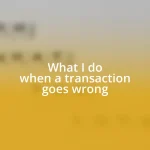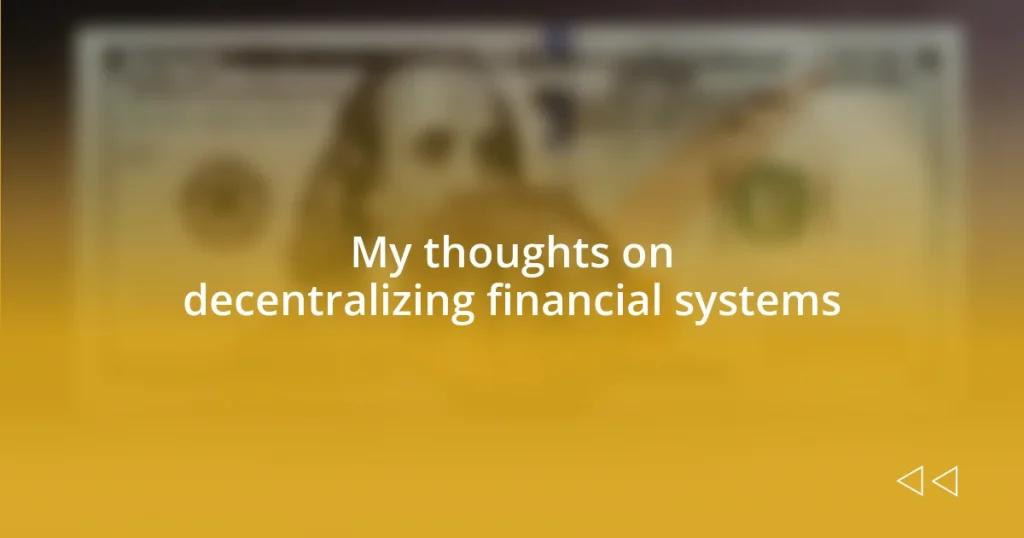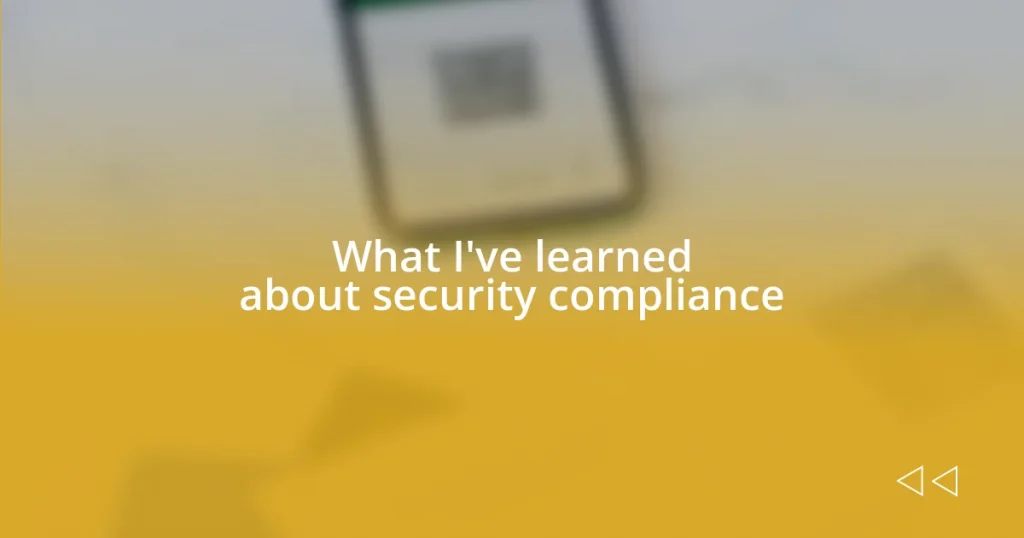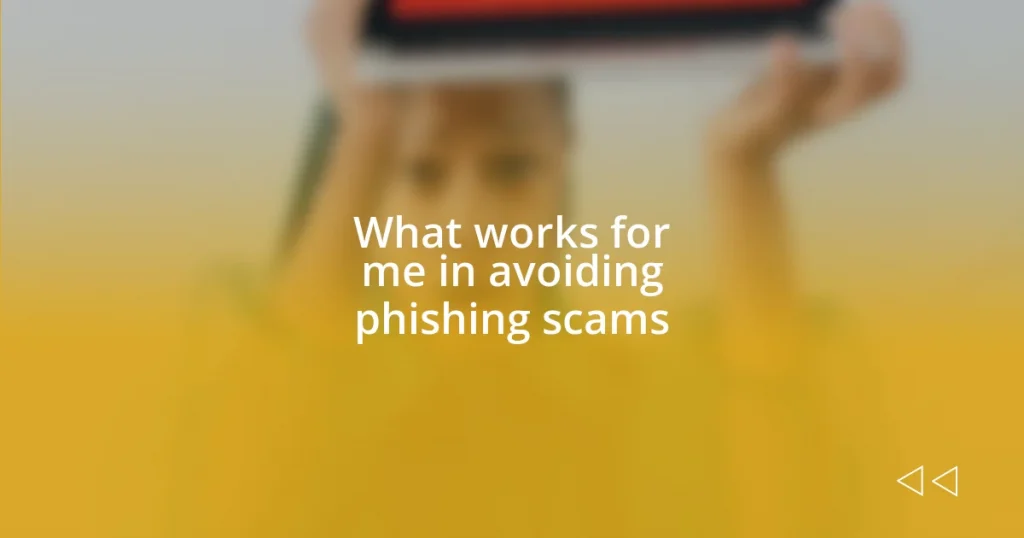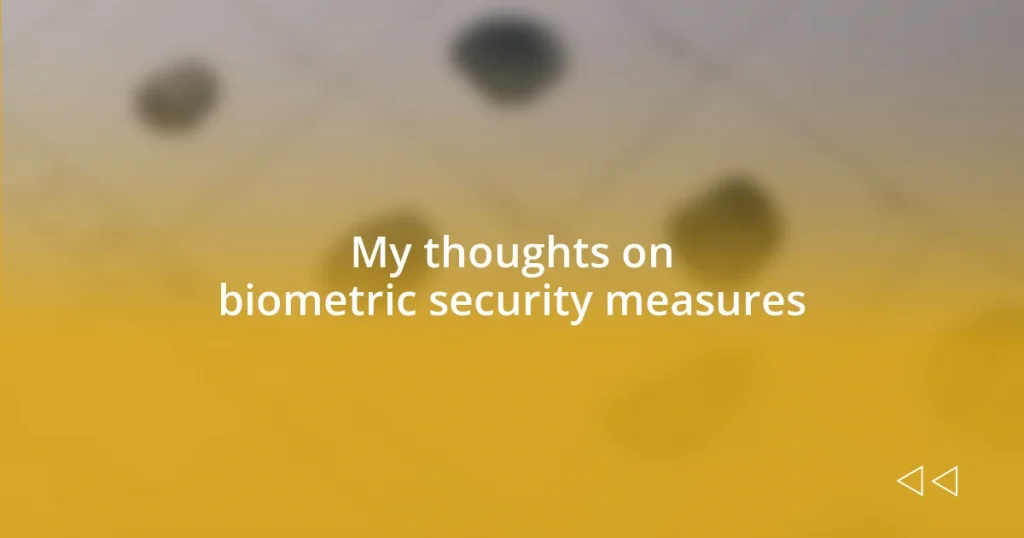Key takeaways:
- Financial decentralization shifts control of money and trust from centralized institutions to individuals, promoting inclusivity and direct asset management.
- Decentralized finance (DeFi) enhances accessibility, security through blockchain technology, and fosters innovation in financial products.
- Challenges like scalability, regulatory uncertainty, and user experience hinder the adoption of decentralized systems, which need simplification for broader participation.

Understanding financial decentralization
Financial decentralization fundamentally shifts how we think about money and trust. Drawing from my own experiences with traditional banking, I recall the frustrations of long wait times and restrictive policies. It raises the question: Why should a few entities control my financial future? This centralization often feels like a gatekeeping mechanism, one that many of us instinctively resist, seeking more direct control.
When we talk about decentralization, we’re really envisioning a system where power is distributed among many rather than concentrated in the hands of a few. Think about it; if everyone can participate in creating and managing financial systems, how much more inclusive and equitable could our economy be? I can’t help but feel excited about the potential for innovation that comes from this shared ownership model.
And while the concept may initially seem complex, at its core, financial decentralization empowers individuals. Imagine a world where your financial interactions are seamless, devoid of intermediaries who often slow down transactions. It brings to mind the exhilarating moment I first used a decentralized app, realizing that I was no longer confined by traditional barriers. How liberating is it to know that you can engage directly with your assets?

Benefits of decentralized finance
When considering the benefits of decentralized finance (DeFi), the first thing that strikes me is the increased accessibility. Gone are the days when financial services were only available to those with a traditional banking relationship. I still remember the exhilaration I felt when I first connected my digital wallet, realizing that I could access a wealth of services from anywhere, without the constraints of physical banks. It’s like having a financial toolbox right at my fingertips, open to everyone regardless of their background.
Another major benefit lies in enhanced security. Centralized systems often fall prey to breaches, leaving users vulnerable and anxious. I recall a period when a friend’s bank suffered a cyberattack, causing widespread panic over frozen accounts and stolen identities. In contrast, the decentralized nature of DeFi utilizes blockchain technology, which provides an immutable and transparent record of transactions. This gives me a sense of assurance, knowing that my assets are protected by robust cryptographic measures.
Lastly, the potential for innovation in financial products is truly exciting. With DeFi, we aren’t limited to conventional offerings. I’ve dabbled in yield farming and liquidity pools—concepts that would have seemed foreign just a few years ago. This democratization of financial tools creates opportunities for anyone to earn and grow their wealth, fostering a more diverse and dynamic financial landscape. How incredible is it to think that anyone with an internet connection holds the keys to participate in this new economic reality?
| Benefit | Description |
|---|---|
| Accessibility | Financial services are open to everyone, regardless of background or location. |
| Security | Utilizes blockchain technology, providing transparent and secure transaction records. |
| Innovation | Encourages development of new financial products and services that meet diverse needs. |

Key technologies behind decentralization
Key technologies behind decentralization are multifaceted and truly fascinating. At the forefront, blockchain technology stands out as the backbone of decentralized finance. I remember the first time I stumbled upon a decentralized application (dApp) built on Ethereum. It was like discovering a new world—one that allowed transactions to occur without the interference of a bank or financial institution. It genuinely felt revolutionary, as if I had been handed a powerful tool that democratized finance in a way I had never imagined before.
Here are a few key technologies making decentralization possible:
- Blockchain: A distributed ledger that records transactions securely and transparently, ensuring that all parties can trust the records without a central authority.
- Smart Contracts: Self-executing contracts with the terms of the agreement directly written into code, automating processes and reducing the need for intermediaries.
- Decentralized Finance (DeFi) protocols: Platforms allowing peer-to-peer transactions, lending, and borrowing without reliance on traditional banks.
- Cryptocurrencies: Digital currencies that enable secure transactions and serve as the primary medium in many decentralized systems.
Each of these technologies connects to a broader vision of a more democratized financial landscape. The excitement I felt when exploring different crypto wallets and seeing my digital assets in real-time was unmatched. It was empowering, an affirmation that I was part of a movement reshaping financial interactions globally.
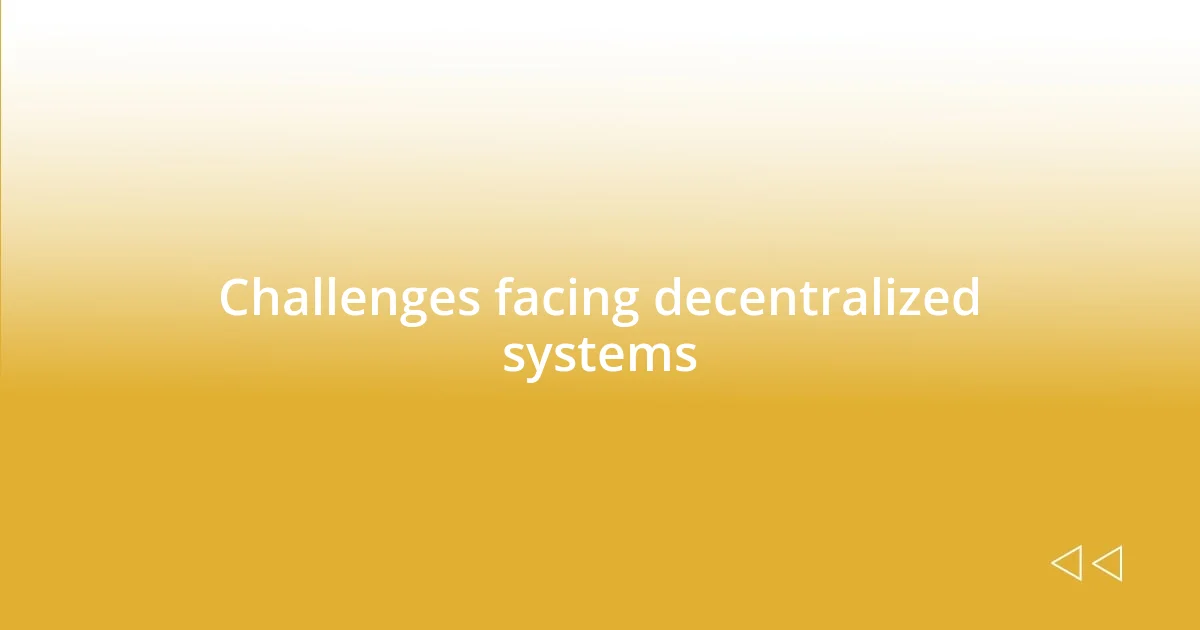
Challenges facing decentralized systems
Decentralized systems face several formidable challenges that can hinder their growth and adoption. One major issue is scalability. I’ve often wondered how these platforms will handle a surge of users during peak times. It reminds me of that one night when I tried to make a transaction on a popular blockchain network only to be met with frustrating delays due to congestion. Such instances highlight the importance of finding ways to expand capacity without compromising speed or security.
Another pressing challenge is regulatory uncertainty. As someone who is passionate about the potential of decentralized finance, I frequently find myself asking how authorities will respond to this emerging sector. I’ve witnessed the anxiety among peers discussing the future of their investments, especially in light of recent government scrutiny on cryptocurrencies. It’s a real concern—having to navigate the uncharted waters of compliance while trying to innovate can stifle progress and deter newcomers.
Lastly, user experience cannot be overlooked. I remember the first time I tried to set up a decentralized exchange—what should have been a simple task turned into a labyrinthine ordeal. Complicated interfaces and jargon-heavy terminology can alienate users who might benefit from these systems. If we want to truly democratize finance, we need to embrace intuitive designs that invite everyone, not just tech-savvy enthusiasts, into this innovative space. How can we expect widespread adoption if the barriers to entry remain so high?

Real-world examples of decentralization
Real-world examples of decentralization are plentiful and often striking in their impact. Take Bitcoin, for instance. When I first bought Bitcoin, I felt an exhilarating mix of fear and thrill. It was fascinating to think that this asset didn’t belong to a single entity; instead, it existed on a peer-to-peer network driven by collective consensus. This was the very essence of decentralization—financial freedom and ownership beyond the reach of traditional banking systems.
Another fascinating case is Ethereum, which introduced smart contracts as a game-changer in decentralized applications (dApps). I vividly recall experimenting with a dApp that allowed me to lend my crypto directly to others, earning interest without a bank or intermediary. This experience was eye-opening, as it illustrated how our financial activities could be transformed into self-executing agreements. How incredible is it to consider that my choices dictated the terms, not the invisible hands of financial institutions?
One can’t discuss decentralization without mentioning DeFi protocols. My journey into DeFi began with a decentralized exchange where I swapped tokens directly with another user. I remember the thrill of bypassing the traditional order book and interacting with smart contracts that automatically executed trades. It felt like being part of this groundbreaking community—a movement redefining how we interact with our assets. Isn’t it truly inspiring to think that anyone with an internet connection can participate in this financial frontier?

Future trends in financial systems
As I look ahead at the future trends in financial systems, I see a growing emphasis on integration with emerging technologies. For instance, the rise of Artificial Intelligence (AI) in financial decision-making has caught my attention. I remember when I first encountered robo-advisors—they felt like a glimpse into a future where algorithms could manage investments more efficiently than a traditional financial planner. This trend not only enhances efficiency but also opens doors for more personalized financial strategies tailored to individual needs.
Another noteworthy trend is the increasing focus on financial inclusion through decentralization. I often find myself reflecting on the millions of individuals globally without access to traditional banking systems. The idea that someone in a remote area could directly participate in a global economy using their smartphone is exhilarating. It leads me to ask, how much richer could our financial interactions become if everyone had access to these tools? This potential for inclusivity truly excites me as it aligns with the ideals of equality and opportunity.
Finally, the concept of interoperability among different blockchain networks is gaining momentum. I’ve experienced firsthand the frustration of managing multiple wallets and assets across various platforms. It makes me wonder: how much smoother would my financial transactions be if systems could communicate seamlessly? The push for greater interoperability suggests that we might soon reach a point where users can navigate multiple cryptocurrencies and networks as fluidly as we browse different apps on our smartphones. That possibility is a sight to behold!





